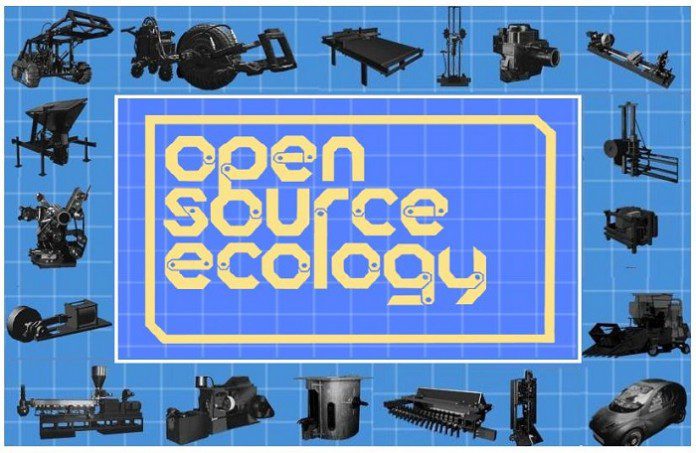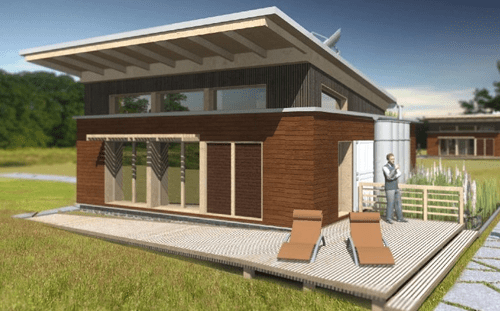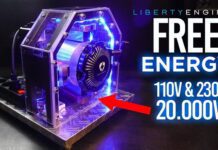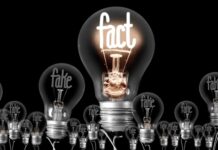Over the past several years Vision Launch has had the pleasure of working with and learning about an organization that specializes in open source hardware called, Open Source Ecology. Open Source Ecology was founded in 2003 by Marcin Jakubowski Ph.D. and is based out of Maysville, Missouri. Since it’s inception the organization has grown into one of the premier open source hardware groups, replete with widespread support which grows larger by the day. Dr. Jakubowski is also a TED Fellow and his global TED Talk on Open Source Ecology received many favorable reviews. The TED Talk also gained widespread support and has over 1 million views.
What is Open Source Ecology?
Open Source Ecology (OSE) is a 501(c) (3) organization that seeks to empower millions of people around the world by creating all the machinery and systems required to build a society from the ground up, while putting the costs within reach of the average person. OSE’s machines are designed to be about 20% of the cost of similar machinery that is currently available off-shelf. OSE calls this program, “The Global Village Construction Set” or GVCS. The GVCS is an open source set of life size Lego like components that address and fulfill virtually every aspect of modern daily living requirements. Open Source Ecology is one of the first organizations of its kind to successfully apply the open source software model to so much hardware.
The Global Village Construction Set (GVCS)
Source—opensourceecology.org
The Global Village Construction Set (GVCS) is a modular, DIY, low-cost, high-performance platform that allows for the easy fabrication of the 50 different Industrial Machines that it takes to build a small, sustainable civilization with modern comforts. We’re developing open source industrial machines that can be made at a fraction of commercial costs, and sharing our designs online for free.
Implications of The Global Village Construction Set
OSE and their GVCS has the potential to make a profound impact which could have a ripple effect through our whole economy. GVCS decentralizes the current concentration of power and provides control for people at a local level. By freely providing information to build all the tools required to create a comfortable society, at a fraction of the cost, this is a movement with legs and has the ability to transform our current reality. OSE has addressed every application necessary to build a community from the ground up, and is in the process of developing a business model that can be used for future entrepreneurs to start their own open source movement from anywhere in the world. The goal is for businesses to be able to apply the GVCS model, boosting local economies and further mobilizing this movement.
Why Open Source?
OSE strongly believes that by publishing and sharing all of its material, several positive effects are produced: open source lets anyone and everyone contribute to the advancement of a concept, directing more brainpower to accelerate innovation on any specific challenge. When using this method, competitive waste is replaced with collaboration, which can lead to superior results. Open source also circumvents our inefficient distribution system. By providing online access to simple, easy to follow plans for DIY machinery that could be made locally, the need for shipping is greatly reduced.
The fact remains that that the open source hardware economy produces only about $100M of global GDP – which is an insignificant fraction of the global economy. OSE’s goal is to change that. Dr. Jakubowski states – “From the point of view of efficiency in a rational market place – the emergence of the open source economy is inevitable.”
Open Source Collaborative Benefits
The benefits of open source hardware are quite profound if you really think it through to its ultimate conclusion. This idea reaches far beyond the machinery of the GVCS. One of our greatest resource is that we all have different life experiences and possess various skill-sets which allow us to see designs or problems from many different perspectives. True innovation happens when someone sees an existing challenge from a totally different perspective than those who have seen it before. That is how the best ideas are born. By freely sharing the source or design of a concept with the world, we use our greatest strength, which is our diversity of thought and perspective.
Open Source vs Wasteful Patent System
Mr. Jakubowski raises another very good point in his presentations. In 2011, Apple and Google spent more money on patents then they did on research & development. These are some of the largest companies in the world with massive resources designated to R & D. Granted, this doesn’t happen every year but the amount of capital that’s being re-directed to a line item category that produces no real results is a huge waste of capital that could have otherwise been spent on something much more productive. Open source does away with this wasteful expenditure and allows everyone who’s interested to take part in the advancement of a concept. OSE does not use patents, but instead open source hardware and free software licenses.
Artificial Scarcity
Mr. Jakubowski states in his many speeches – we do not have a lack of natural resources—and he is correct — we don’t. We are rich in raw materials— we’re just using an antiquated system based on limiting beliefs that no longer serve us (I’m not sure that it ever really did). Our monetary system is designed to create scarcity, our energy complex is holding on to a dying model, centralized power is wasteful and inefficient, and these are just a few of the models that need updating. We can be overcome these challenges with bold new ideas using our collective knowledge and creativity. Open source decentralizes human ideas and labor like Bitcoin does to human capital.
We compete against each other in this system rather than working with each other towards goals that would benefit all of our lives. I’m not suggesting that competition is bad, but imagine if we came together to solve our biggest challenges where the solutions would benefit everyone! Dr. Jakubowski confirms this by pointing out that “competition is bad when it stifles innovation instead of accelerating progress.”
Scarcity is not a fact, and it doesn’t have to be the new normal. Scarcity is a challenge for us to find innovative ways forward with new thinking to solve our challenges without compromising our current standards of living.
Open Source Ecology’s Micro-House
The OSE Micro-House is unlike any other home on the market today. To call the home eco-friendly would be an understatement, but what really sets the home apart from others is its many unique features and the reasons behind their design. As Dr. Jakubowski rightly points out, living costs is one of the largest expense in our daily lives. Because of our monetary policy over the last 100 years, wages have not kept pace with inflation, and today’s homeowners are saddled with high mortgage payments that keeps them in perpetual debt. Our food and energy costs (which are not included in official inflation statistics) are also consistently rising, leaving us with less expendable income every year. OSE sees a different way forward.
Open Source Ecology’s Building Methods
OSE takes a unique approach when building their Micro-Houses because much of the building materials required for the homes are extracted from the property itself, dramatically reducing overall costs. OSE employs their open source CEB (compressed earth brick) press, which uses the dirt from the land to make all the bricks needed to construct the home, and with a maximum output of 5000 bricks per day, large scale production can be accommodated with ease. Depending on the region, OSE blends cement into the brick mix for stability.
Most of us remember the childhood tale of the three little pigs, and as the big bad wolf discovered, structures that are constructed from solid brick are superior to most. OSE’s solid brick design make their micro-homes some of the most sturdy and robust homes available. Their homes also has other positive attributes, such as highly efficient thermal dynamic properties as well as remarkable soundproofing characteristics.
Swarm Building
OSE uses an extremely efficient building technique called “Swarm Building.” Swarm Building is a highly coordinated effort where OSE assigns specific tasks to a large group of people and then breaks into subgroups, allowing all to work in parallel. This method accelerates the process and allows the houses to be completed quickly and efficiently.
Almost 100 people were involved in the building and design of their latest micro-home, which was built in under a week. OSE documented its progress online and published all of its data in true open source fashion.
Open Source Ecology Home Costs
The goal is to produce a replicable model for building high-performance homes at $30 per square foot—that cost is less than 1/3rd the cost of conventional building methods. OSE’s mission is to change the current high mortgage paradigm and put responsible home ownership within more of our populations reach. The organization also wants to offer affordable, superior housing solutions to other parts of the world.
OSE Striving For Total Energy Independent Micro-House By 2016
OSE is collaborating with several alternative energy specialists to heat and power the MicroHouse via inexpensive, local resources – namely biomass, solar energy, and hydrogen. OSE’s latest model uses a hydronic woodstove for the entire home’s heating needs. Photovoltaics and solar hydrogen will be used for cooking and water heating in the near future. The model also involves wood char production and biomass gasification for backup electrical power generation. When fully integrated, these new energy sources will make the home virtually energy free.
Integration of Agricultural Concepts In The Micro-House
In addition to all the other features listed above, OSE is developing several different methods of agriculture to be integrated directly in and around the home, providing further self-sufficiency to the homeowner. This includes an aquaponic greenhouse that produces vegetables and fish for a family of four, and a food garden including edible landscaping as part of its regenerative agriculture aspect. The micro-homes will also have rainwater collection units built into the structure that can be directed for a multitude of uses.
Personal Freedom
Imagine what owning a home with little to no mortgage payments and utility costs would do for one’s personal freedom. Our most valuable asset in life is our time. I would venture to say, using conservative figures, that the average homeowner or renter in the U.S. works at least 3 months out of the year just to pay for their housing and utility needs. This is OSE’s reason behind designing their home the way they did.
Final Note
OSE is on the leading edge of a new revolution that has only begun. This is not a revolution that will be engaged with protest or force, this will be done with pragmatic ideas that will win over hearts and minds. We are also going through an evolution of consciousness where far more possibilities exist. OSE has the potential to level the whole playing field and change our current paradigm where large corporations will no longer have a monopoly over our goods and services, and we the people will have stewardship over these new systems at a local level.
Buckminster Fuller once said, “You never change things by fighting the existing reality, to change something, build a new model that makes the existing model obsolete.” That’s exactly what OSE is doing with the GVCS in a very big way.
Strong proponent of individual liberty and free speech. My goal is to present information that expands our awareness of crucial issues and exposes the manufactured illusion of freedom that we are sold in America. Question everything because nothing is what it seems.




















